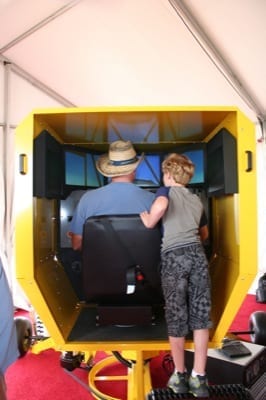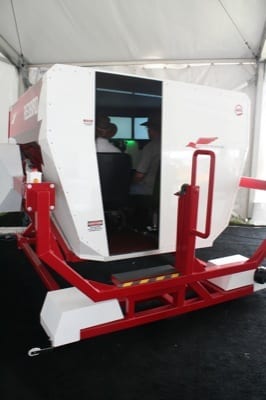The FARs require a pilot perform three takeoffs and landings within 90 days to maintain currency. Maintaining proficiency takes significantly more time, and often it is a lack of proficiency that leads to accidents and incidents.
During AirVenture 2012, flight instructors from the Society of Aviation and Flight Educators (SAFE) volunteered their time for the inaugural Pilot Proficiency Project. Conceived by SAFE in 2010, the demonstration project was a cooperative effort that involved Redbird Flight Simulations and the Experimental Aircraft Association (EAA).
 “This was the first time we have done something like this at AirVenture,” said Mark Adams, SAFE chairman. “We’ve always had the Learn to Fly aspect at AirVenture and this year we decided to also offer something for people who are already rated pilots.”
“This was the first time we have done something like this at AirVenture,” said Mark Adams, SAFE chairman. “We’ve always had the Learn to Fly aspect at AirVenture and this year we decided to also offer something for people who are already rated pilots.”
The program consisted of a series of forums that qualify for the FAA’s Wings program, in addition to training sessions in full motion flight simulators and a crosswind trainer.
The simulator sessions were especially popular, SAFE officials said. Pilots signed up for an hour session made up of a 20-minute briefing, 20-minute flight, and 20-minute debrief. Pilots had a choice of 15 scenarios to fly. For each scenario, there was a unanticipated challenge, such as an engine power loss or deteriorating weather. The instructors were given a series of topics to emphasize with the pilots.
“The scenarios are designed around the top 10 accident factors that cause problems in general aviation,” said Adams. “We have scenarios for VFR and IFR rated pilots.”
Pilots who brought their logbooks received a sign off for instruction given from the CFI. Those who didn’t got a sticker with the sign off that could be placed in their logbooks.
As part of the debrief, the pilots were invited to give feedback on what they liked or disliked about the set up.
 “By in large, the comments very positive,” said Adams. “Some people said it was the best instructional experience they have had, noting that they had opportunities to do things in the simulator that they wouldn’t do in the airplane, like have an engine failure with a glide all the way to the ground for landing. They said it really gave them the opportunity to stop and look and learn.”
“By in large, the comments very positive,” said Adams. “Some people said it was the best instructional experience they have had, noting that they had opportunities to do things in the simulator that they wouldn’t do in the airplane, like have an engine failure with a glide all the way to the ground for landing. They said it really gave them the opportunity to stop and look and learn.”
In addition to flying in the full-motion FMX and crosswind trainer, RedBird also provided opportunities in a single-seat sim configured as a J-3 Cub, complete with a yellow cab, black ties, and a wooden prop hanging off its nose.
According to Adams, the program was so popular that even before AirVenture ended there were discussions with various aviation organizations about bringing the Pilot Proficiency Program to other aviation venues.
For more information: RedbirdFlightSimulations.com, SafePilots.org, AirVenture.org
